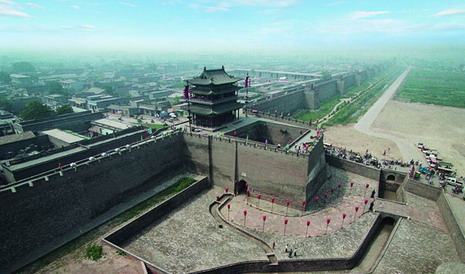Shanxi Through the Eyes of Foreigners
Shanxi is regarded as an important cradle of Chinese civilization. It boasts the magnificent Taihang Mountain, the Yellow River, which has nurtured the millennia-old Chinese civilization, Wutai Mountain, which is a famous Buddhist site, the Yungang Grottoes and the ancient town of Pingyao the best preserved ancient county in the country.
Potential for tourism within Shanxi villages
[2016-07-14 14:42]There, in the land of the Yellow Earth, bordered by the Yellow River, was history set in stone, for indeed stone featured prominently - narrow sometimes covered alleys were paved in stone blocks.
Ancient financial center of the Middle Kingdom: Pingyao
[2016-07-13 12:43]The center of Pingyao is one of the greatest historic sites of China. Declared in 1997 a World Heritage Site by the UNESCO, Pingyao gives us insight into the ancient prosperous merchant pioneers, the ones that established the first banks in China during Ming and Qing dynasties (14th-20th centuries).
One thousand ways to write longevity
[2016-07-12 10:53]Down a corridor in Wang’s Family Courtyard, a woman leans over a thin tablet of bamboo. She uses a small knife to whittle bamboo skin into characters, one stroke at a time. I ask if she is writing a poem or an essay.
Shanxi: Land of ancient splendor
[2016-07-08 16:22]Let's set ourselves in Shanxi Province in the northern part of the country and go through some of the wondrous sightseeing spots this province has to offer. We'll also look at the influences in this charming land and the people who offer a lifetime of memories.
Shanxi opens its doors on history
[2016-07-08 14:46]I like doors. Old doors generally and wooden doors specifically. They have a texture and solidity modern doors of often plastic and glass don't have. Doors speak to me of opportunity and intrigue me in imagining what lies behind them.
Elder of Xiwan recounts 16 generations of village history
[2016-07-07 10:23]Xiwan is a rural village in Qikou town of north China's Shanxi province, only a few hours from Beijing on the high-speed train. It is currently off the beaten track. However it is fast becoming another spot on Shanxi’s long list of impressive scenic sites.
